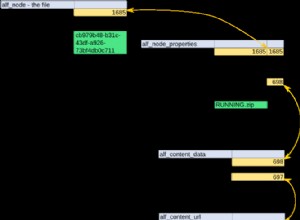Questo potrebbe essere spiegato con quanto segue
mysql> select * from table1 ;
+------+------+
| id | val |
+------+------+
| 1 | 10 |
| 2 | 30 |
| 3 | 40 |
+------+------+
3 rows in set (0.00 sec)
mysql> select * from table2 ;
+------+------+
| id | t1id |
+------+------+
| 1 | 1 |
| 2 | 2 |
+------+------+
2 rows in set (0.00 sec)
Qui table1.id <-> table2.t1id
Ora quando facciamo un left join con la chiave di unione e se la tabella di sinistra è table1, otterrà tutti i dati da table1 e nel record non corrispondente su table2 verrà impostato su null
mysql> select t1.* , t2.t1id from table1 t1
left join table2 t2 on t2.t1id = t1.id ;
+------+------+------+
| id | val | t1id |
+------+------+------+
| 1 | 10 | 1 |
| 2 | 30 | 2 |
| 3 | 40 | NULL |
+------+------+------+
3 rows in set (0.00 sec)
Vedi che table1.id =3 non ha un valore in table2 quindi è impostato come nullQuando applichi la condizione where farà un ulteriore filtro
mysql> select t1.* , t2.t1id from table1 t1
left join table2 t2 on t2.t1id = t1.id where t2.t1id is null;
+------+------+------+
| id | val | t1id |
+------+------+------+
| 3 | 40 | NULL |
+------+------+------+
1 row in set (0.00 sec)




